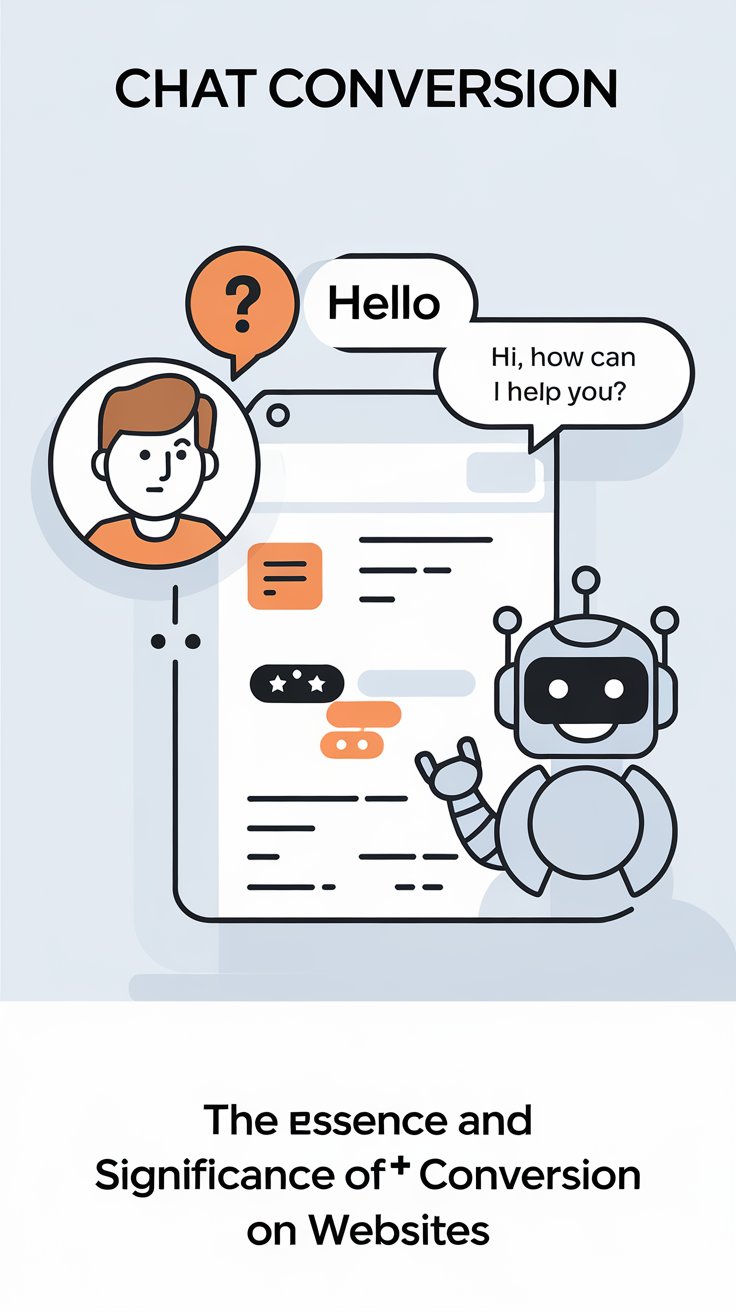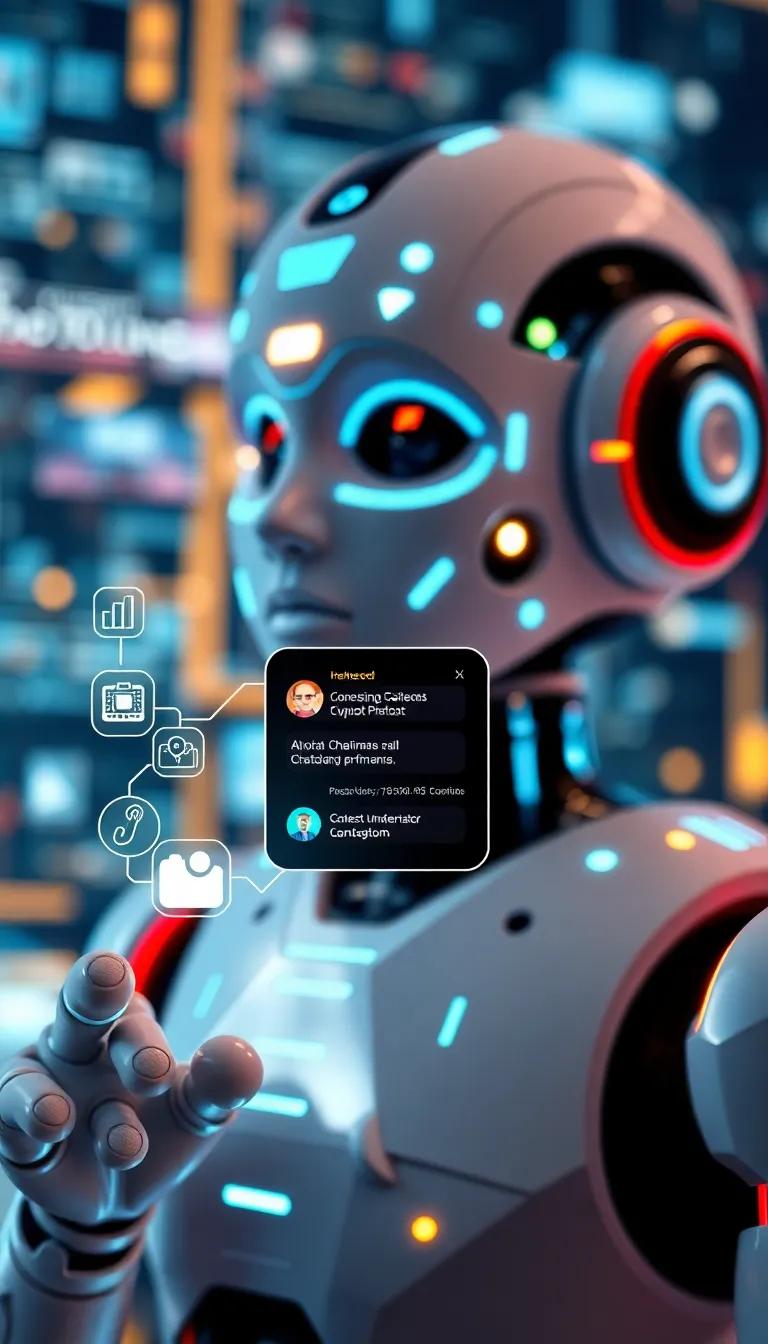Introduction
In today’s competitive digital environment, utilizing chat conversion strategies is essential for any website wanting to boost engagement and conversions. Free website chat widgets have become invaluable tools for businesses looking to provide immediate assistance to visitors, answering questions and addressing concerns in real-time. Implementing effective chat conversion strategies transforms a simple chat tool into a powerful mechanism that enhances user experience and drives higher interaction rates, ultimately leading to increased sales conversions.
This article looks at some smart ways to boost how free website chat widgets work. We’ll cover things like using cool chatbot features and figuring out what users want. The goal is to make interactions smooth and engaging for visitors. As we dig into these ideas, you’ll see how tweaking chat conversations can really improve customer happiness, build trust, and turn questions into sales.
Understanding Chat Conversion The Essence and Significance of Chat Conversion on Websites
Chat conversion is the process by which spontaneous conversations with website visitors are transformed into meaningful interactions that lead to desired outcomes, such as lead generation, sales, or customer satisfaction. At its core, chat conversion can be seen as a bridge connecting potential customers with businesses, facilitating real-time communication that addresses inquiries, guides purchasing decisions, and fosters relationships. This immediacy is essential in today’s fast-paced online environment, where users expect prompt responses and engaging interactions.
The technology behind chat widgets is crucial to understanding how chat conversion works. These tools, embedded within websites, provide a platform for visitors to initiate conversations easily. They can come equipped with features like automated responses, integration with customer relationship management (CRM) systems, and tracking capabilities that enable businesses to monitor engagement levels and conversion rates. The utilization of such technology not only makes it easier for users to communicate but also allows companies to capture valuable data on user behaviors and preferences, which can be leveraged to improve future interactions.
Chatbots play a vital role in enhancing customer interactions and boosting chat conversion rates. By employing artificial intelligence, chatbots can engage with visitors 24/7, providing instant responses and guiding users seamlessly through their journey. These bots can interpret common queries and provide relevant information, thus reducing friction and waiting times. For example, if a visitor inquires about shipping policies or product availability, a well-programmed chatbot can deliver accurate data swiftly, enabling the user to make informed decisions without delay.
Chatbots can take a look at how users have interacted in the past and what they usually do to make their replies more personal. This kind of one-on-one touch really ups the user experience and makes it more likely for customers to convert because they feel that the brand gets them and appreciates them. So, chat conversion isn’t just a step by step thing; it’s an ongoing chat that shows how much a brand cares about connecting with customers and keeping them happy.
Personalizing User Interactions to Enhance Chat Conversion
Understanding User Preferences and Behaviors
Personalization in chat interactions is a pivotal strategy to enhance chat conversion rates. By tailoring conversations to align with user preferences and behaviors, businesses can create a more engaging and responsive atmosphere that fosters meaningful interactions. Understanding these factors enables chat representatives or chatbots to dynamically adjust responses and suggestions, thereby driving higher engagement levels.
One effective method to personalize chat interactions is through user segmentation. Segmenting visitors based on various criteria—such as demographics, behavior on the site, and past interactions—allows the chat widget to present tailored messages that resonate with the individual’s needs. For example, a returning user might be greeted with a personalized message that reflects their previous interactions, whereas a first-time visitor could receive a warm welcome accompanied by helpful resources to guide their exploration of the website.
Incorporating user data enhances this personalization further. By utilizing customer relationship management (CRM) systems, businesses can access valuable insights into user behavior. Recognizing patterns in browsing history or purchase behavior can inform the chat experience. For instance, if a user frequently visits a product category, the chat widget can proactively offer assistance or suggest related products, effectively guiding the user down the conversion funnel.
Crafting Tailored Conversations
The language and tone of chat interactions also play a significant role in personalized experiences. Adopting a friendly and approachable tone can significantly reduce barriers for users who might otherwise feel hesitant to engage. Using the user’s name in greetings can create a sense of familiarity and build rapport, making the chat experience feel more human.
You know using natural language processing or NLP can really boost how chatbots get what people are asking and how they respond. When businesses train these chatbots to pick up on the different ways folks might express what they need or worry about, it keeps the conversation on point and useful. This kind of flexibility not only makes people happier but can also help improve sales since users feel like their needs are being understood and supported.
Personalization is really all about making users feel special and appreciated. When businesses get to know what people like and how they act, they can have chats that are not just fun but also lead to better results in conversion rates and keeping customers coming back.
Integrating Advanced Chatbot Features to Boost Chat Widget Performance
Proactive Chat Invitations
The effectiveness of chat widgets can greatly increase through the implementation of advanced features designed to engage users right when they need it. One of the standout functionalities is proactive chat invitations. These invitations allow the chatbot to initiate conversations based on user behavior and interactions on the website. For example, if a visitor lingers on a particular product page for an extended period, the chat widget can automatically prompt them with an invitation to ask questions or find more information. This approach not only captures the user’s attention but also demonstrates attentiveness to their browsing habits. By engaging users at critical moments, proactive chat invitations can significantly reduce the chances of potential customers leaving the site without converting.
Automated Responses and Customization
Another advanced feature that enhances chat performance is automated responses. These pre-configured replies allow chatbots to handle frequent inquiries without delay, providing immediate support to users. For common questions about hours of operation, return policies, or pricing, automated responses ensure that visitors receive instant assistance, thus improving user satisfaction and reducing waiting times. Effective implementation involves customizing these responses based on user intent and gathering data from past interactions to refine the chatbot’s understanding of customer needs.
Chatbots can actually use info from the chats they’re having to make their replies a bit more personal. So when you ask something follow-up, the chatbot can give you answers based on what you talked about earlier, making the chat feel smoother and more fun. Plus, if you hit them with a tricky question, they can easily pass you over to a human agent, making sure you feel appreciated and supported during your conversation.
Integrating these advanced features not only enhances the efficiency of the chat widget but also fosters a more engaging customer experience. When users perceive that their time is respected through quick responses and relevant prompts, they are more likely to engage meaningfully with the business, leading to increased conversion rates. Together with personalization strategies discussed previously, these enhancements create a powerful synergy that can elevate chat performance significantly.
Measuring Chat Performance Key Performance Indicators KPIs for Chat Success
In the quest to optimize chat conversion rates, establishing a robust framework for measuring performance is vital. Tracking key performance indicators (KPIs) allows businesses to assess the effectiveness of their chat widgets and identify areas for improvement. Some of the most pertinent KPIs include chat volume, response time, user retention, and conversion rates.
Chat volume refers to the number of interactions occurring within the chat widget over a specific time frame. Monitoring this metric helps businesses gauge user interest and identify peak engagement periods. An increase in chat volume often correlates with effective proactive strategies or marketing campaigns that draw users to the site.
Response time is another critical KPI. It measures the time taken for a customer query to receive a response. A shorter response time typically enhances user satisfaction and engagement, often leading to higher conversion rates. Utilizing analytics to track average response times can help in refining response strategies and ensuring timely engagement with customers.
User retention focuses on how frequently users return to interact with the chat widget after their initial visit. By analyzing this metric, companies can determine the chat’s ability to foster relationships with users, which is essential for long-term conversion success. High retention rates suggest that users find value in the interactions provided.
Conversion rates, perhaps the most telling of metrics, indicate the percentage of chat interactions that lead to desired actions, such as a sale or sign-up. Analyzing conversion data allows businesses to evaluate the effectiveness of their overall messaging and chat strategies. If conversion rates are low, teams can investigate chat scripts, user experience, and other factors that may hinder success.
The role of analytics in assessing chat widget effectiveness cannot be overstated. Utilizing tools like heat maps, user journey analytics, and performance dashboards provides insight into user behavior and chat widget functionality. These analytics offer granular detail that can reveal trends, pain points, and opportunities for enhancement. By leveraging analytics to inform strategies, businesses can make data-driven decisions that refine their chat approach and ultimately boost conversion rates.
Investing in a measurement strategy built on these KPIs equips businesses with the insights needed to drive performance improvement and customer engagement in their chat initiatives.
Future Trends in Chat Conversion Innovations Shaping Strategies
Emerging Technologies and Their Impact on Chat Widgets
The landscape of chat conversion is rapidly evolving, fueled by advancements in technology and changing consumer expectations. As businesses increasingly rely on chat widgets as a primary engagement tool, it is essential to identify future trends that will significantly influence their effectiveness. One notable trend is the integration of artificial intelligence (AI) and machine learning, which will enhance the capabilities of chat widgets. These technologies allow for the development of more sophisticated chatbots capable of understanding natural language nuances, learning from previous interactions, and personalizing responses. Such improvements can drastically affect engagement, turning casual website visitors into loyal customers.
Another trend gaining traction is the use of omnichannel communication. Customers today expect seamless transitions between various communication platforms. By integrating chat widgets with other channels such as social media, email, and SMS, businesses can create a cohesive customer journey. This holistic approach fosters a more engaging experience, making it easier for users to obtain information regardless of the platform they choose. Such adaptability not only enhances user satisfaction but also encourages higher conversion rates, as customers feel more connected to the brand.
Predicting Upcoming Innovations in Chat Strategies
Looking towards the future, several innovations are likely to emerge that could redefine chat conversion strategies. Voice-activated chat interfaces, for instance, are expected to become more prevalent, offering a hands-free alternative for users. With the growth of smart devices and home assistants, integrating voice interaction into chat widgets can create a more dynamic engagement method. This could dramatically increase accessibility and attract a wider demographic, particularly among younger consumers who prefer voice commands over traditional typing.
Using advanced analytics and real-time feedback can really change how chat strategies work. When businesses use data tools to better understand what customers want and how they act they can make their chat widgets perform better. Predictive analytics can show what customers go through on their buying journey helping marketers personalize their strategies and improve conversion rates.
As chat conversations become a big part of improving how websites work, it’s super important to keep up with new trends. Using AI, having strategies across different channels, adding voice features, and having strong analytics will definitely shape how we engage with customers in the future. This will lead to fresh and effective ways to handle chat conversions.
Conclusions
Let’s talk about how ramping up chat conversion can really help both user experience and sales. When businesses add smart chatbot features, tailor conversations to each user, and keep an eye on how customers act through analytics, they can really get the most out of their chat tools on the website. Like we’ve discussed in this article, it’s not just about slapping on a chat option; you really need to put some thought into how you set it up and keep making it better to make sure it fits what users want and expect.
Adapting these chat conversion techniques will lead to improved engagement, reduced bounce rates, and higher conversion margins. As competition intensifies in the online space, investing in these strategies is crucial for businesses aiming for sustained growth and customer loyalty. Take these insights and develop your website chat strategy, ensuring you are well-equipped to meet the evolving demands of today’s digital consumers.
















